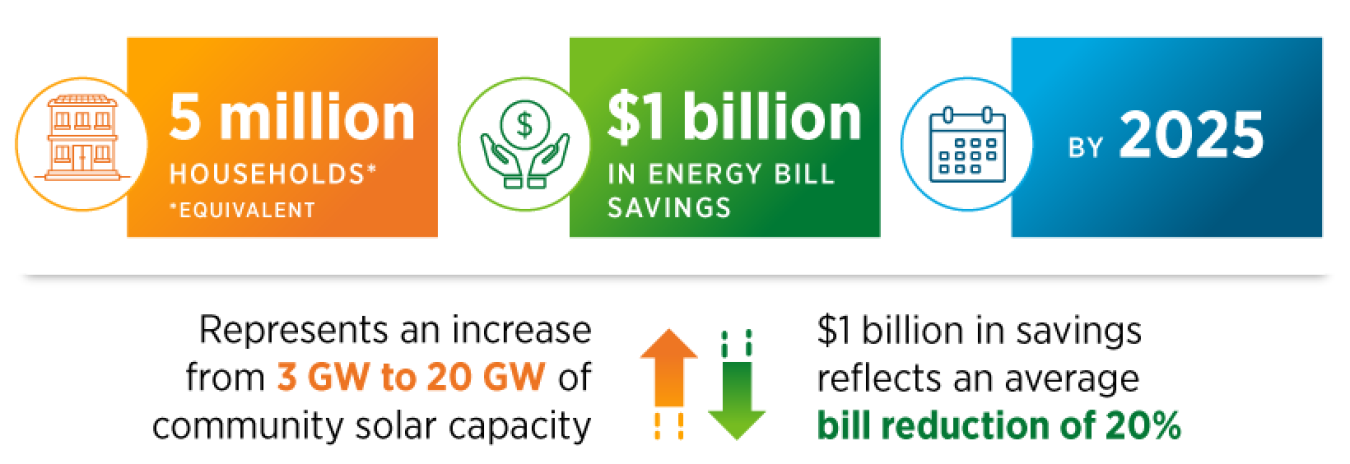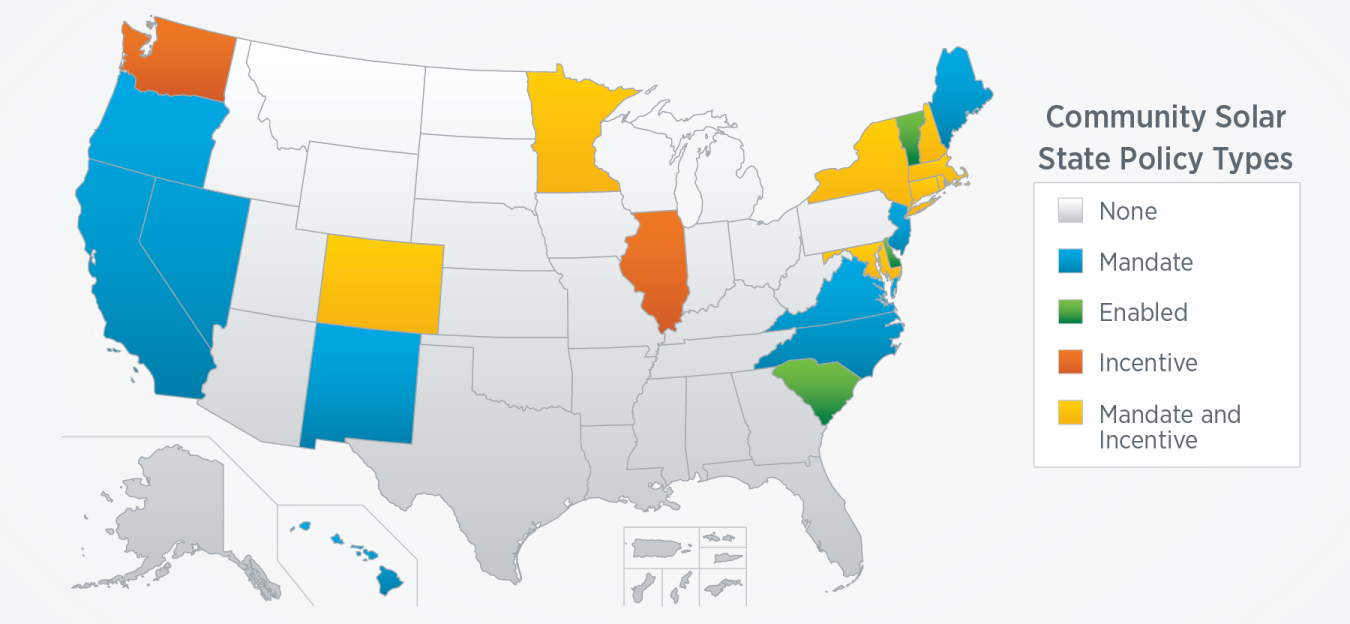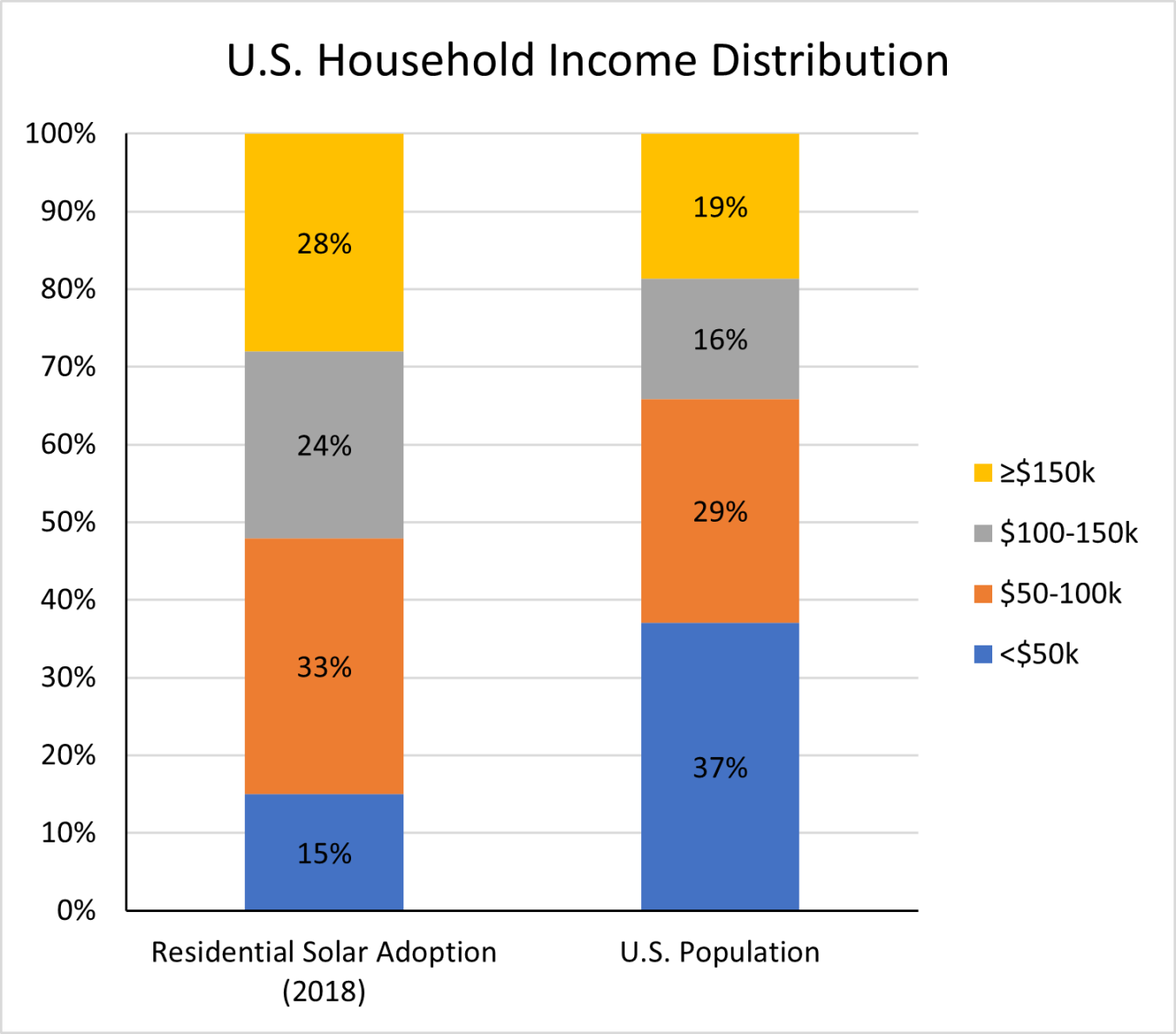National Community Solar Partnership Target: Enable community solar systems to power the equivalent of 5 million households and create $1 billion in energy savings by 2025

The National Community Solar Partnership set an ambitious target in October 2021 to enable community solar systems to power the equivalent of 5 million households and create $1 billion in energy savings by 2025. Reaching these milestones will help the nation achieve 100% clean electricity by 2035 and ensure that all Americans can reap the meaningful benefits of renewable energy including reduced energy burden, increased resilience, and workforce development.
Why this Target?
At the end of 2020 there was approximately 3 GWDC of community solar in the United States, enough to power the equivalent of 600,000 households. Of all distributed solar photovoltaics installed in the U.S., though, community solar represented just 8%.
Community solar is an important model for ensuring all Americans have access to the meaningful benefits of renewable energy, regardless of income, home ownership status, or the suitability of their roof for solar panels. But community solar development can face barriers that make it more difficult to deploy than other distributed solar.
Challenges to Community Solar Deployment
Community solar development can face significant barriers, including a lack of supportive policy. As of December 2021, fewer than half of U.S. states and territories had enacted legislation that supports community solar. Community solar projects are also inhibited by interconnection issues that do not usually arise for other distributed solar. It can be more difficult to finance community solar projects given uncertainty around maintaining subscriber enrollment.

States with supportive community solar legislation, including carveouts and incentives for low- to moderate-income households. (NREL, updated from Heeter, Xu, and Chan (2021))
For more detail on barriers to community solar deployment, read a summary of responses to the Solar Energy Technologies Office’s Equitable Community Solar Deployment Request for Information.
Equity in Distributed Solar

LBNL, Barbose et. al, 2021
The benefits of solar energy are not distributed equitably among all households. Households earning less than $100k represent 2/3 of all U.S. households but adopted less than half of all residential solar systems in 2018. The contrast is even more stark for those households earning less than $50k per year.
Some states have developed solar financing programs that target low- to moderate-income households, but many Americans remain unable to afford the up-front costs of solar or quality for loan, lease, and power purchase agreement. Additionally, solar financing mechanisms can be inflexible which can make them especially inaccessible for households with income fluctuations, employment, or housing transitions.